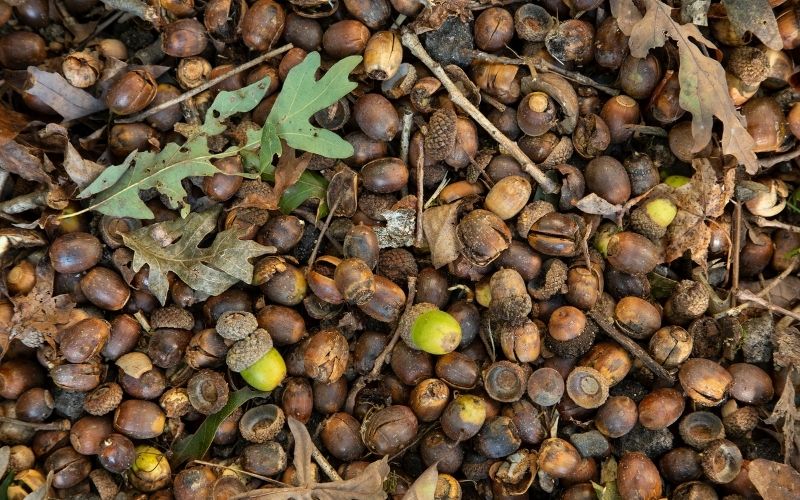
By Katie Martin/DWR
The “music” of fall for many wildlife species is the sound of acorns raining down from the trees. In most years, the steady “plop, plop” begins in early September and can continue, depending on the crop, through October. On calm days, they fall steadily as singles or pairs; but on a rainy, blustery day they can pour from the sky, leaving “marble yards” to navigate across in their path. Live under or near a metal-roofed structure in a bumper year and you may be reaching for ear plugs to block out the crack and pings as they bounce to the ground.
But for white-tailed deer, blue jays, ruffed grouse, wild turkeys, black bears, woodrats, squirrels (of all varieties), and numerous other species, these sounds are the ringing of the dinner bell and a signal to forage now in preparation for the upcoming winter. Whether you’re a hunter preparing for the upcoming seasons or a wildlife enthusiast enjoying crisp hiking days, there should be quite a bit of acorn music in the woods this fall!
Acorn production across Virginia in 2025 can be categorized overall as very good for white oak species and average for red oak species This year’s white oak index exceeds the new “normal,” highlighting a bumper year across many survey routes.
Red oaks surveyed have remained stable since 2023, with a slight increase this year. This aligns with the long-term red oak median and above the 10-year median.
White oak production was consistent across the state, with most routes reporting above-average production.
Red oak production was average or slightly above average in all areas except for the Southern Piedmont. Red oak acorns germinate the following spring, thus giving wildlife additional time to consume them before they sprout into a seedling.
As with all years, acorn production is highly variable and very site dependent.
This variability is due to many reasons (weather, insects, tree species), but for some of our survey sites we are probably approaching the biological end of production due to tree age. Unfortunately, finding “new” stands of mature oak in the 50- to 70-year-old age range is becoming more and more difficult due to aging forests and lack of sufficient regeneration.
Replacing aging trees/survey sites will be quite a challenge moving forward.

